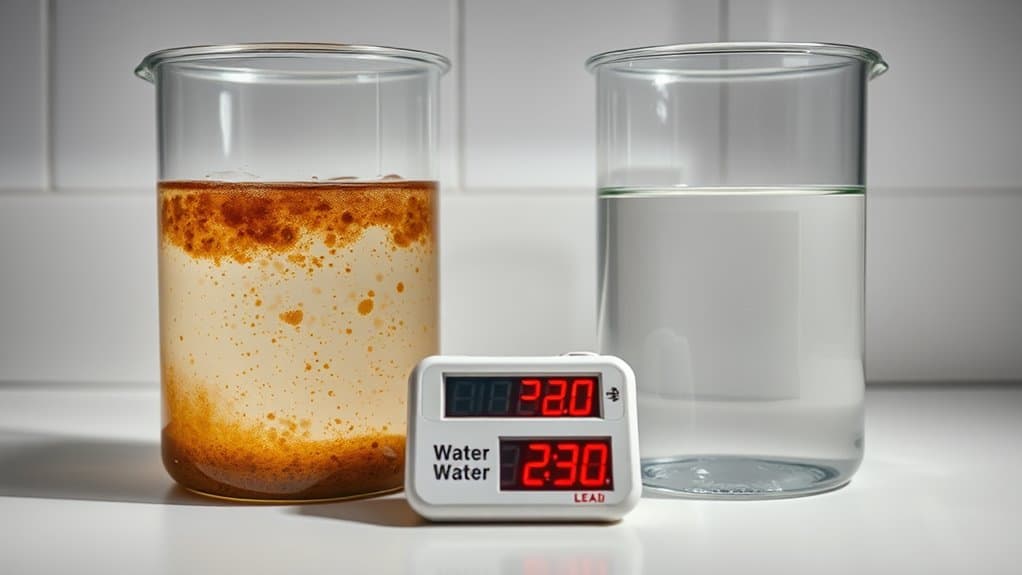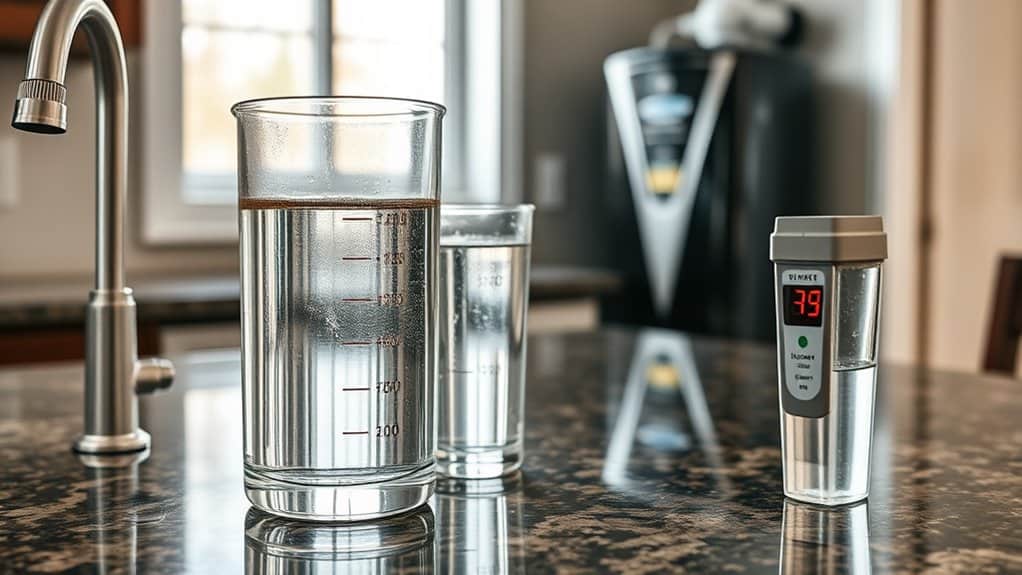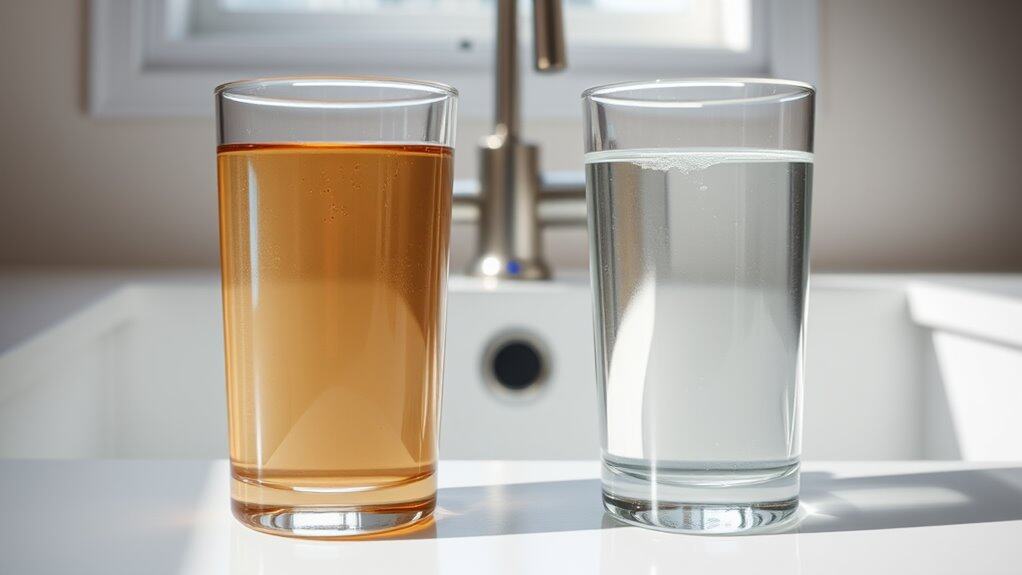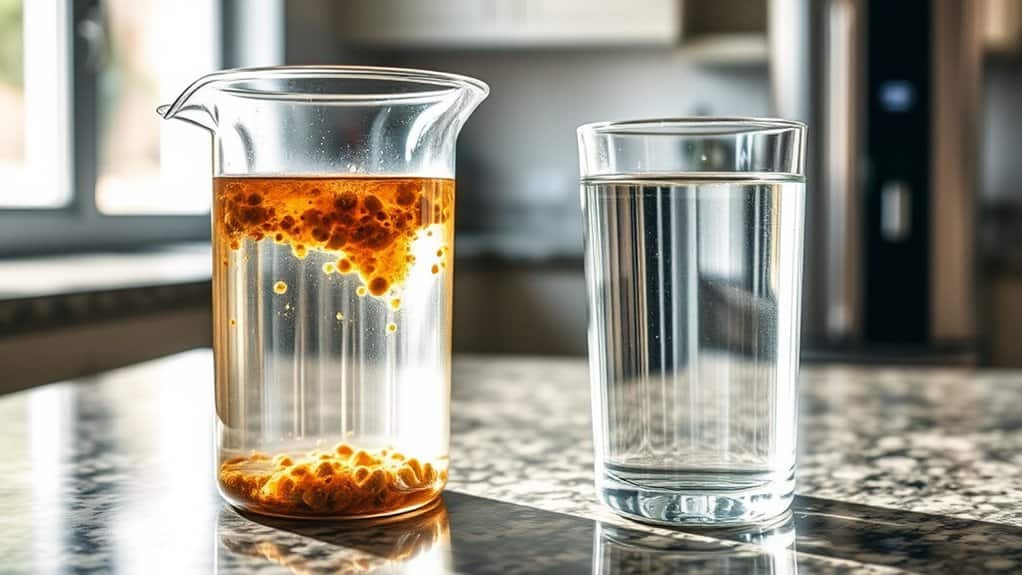We discovered our home’s water contained dangerous lead (0.018 ppm), coliform bacteria, high nitrates, and acidic pH after investigating persistent health issues. Though we’d ignored metallic tastes, sulfur odors, and cloudy water for years, our multi-stage whole-house filtration system with UV purification transformed our lives. Our children’s allergies decreased, skin irritations cleared, and we’ve saved $720 annually while reducing landfill waste. Our journey reveals what might be hiding in your pipes.
Key Takeaways
- Water tests revealed dangerous lead levels of 0.018 ppm, bacterial contamination, and concerning nitrate levels.
- Several warning signs like unusual tastes, cloudy appearance, and scale buildup were overlooked before testing.
- A whole-house filtration system with UV purification was installed to address all identified contaminants.
- Family health improved significantly with reduced allergies, cleared skin irritation, and improved immune response.
- The system eliminated $720 in annual bottled water costs while preventing 480 plastic bottles from entering landfills.
The Warning Signs We Ignored For Years

When considering the quality of our drinking water, most of us have overlooked critical warning signs that could indicate contamination.
We dismissed unusual metallic tastes and sulfur odors as temporary issues. The persistent sulfur smell typically indicates the presence of naturally occurring minerals that may warrant further investigation. In addition, hard water damage can significantly affect plumbing and appliances, leading to costly repairs. The cloudy appearance and visible sediment seemed insignificant despite their correlation with unseen contaminants.
We’ve ignored system indicators too—low water pressure, scale buildup on faucets, and blackening around drains.
Even government boil advisories were treated casually. Most concerning, we failed to connect recurring health symptoms like gastrointestinal issues and skin irritation to our water quality.
These overlooked indicators accumulated while we remained unaware of potential long-term health implications.
What Our Water Test Results Actually Revealed

After receiving our comprehensive water testing results, we were confronted with disturbing evidence of multiple contamination issues that had been affecting our household supply for years.
Our report revealed lead levels of 0.018 ppm, exceeding the 0.015 ppm safety threshold—likely from our aging plumbing infrastructure. This situation is becoming increasingly common as traditional plumbing systems struggle to maintain safe water standards.
Total coliform bacteria were present at 3 colonies/100 ml, indicating potential sewage contamination.
Nitrate levels measured 8 mg/l, approaching the 10 mg/l maximum.
These findings explained our recurring gastrointestinal issues and metallic-tasting water.
The detection of these contaminants at concerning concentrations confirmed our suspicions—we’d been unknowingly exposing ourselves to significant health risks.
The water’s pH was 6.0, below the acceptable pH range of 6.5 to 8.5, which likely contributed to the leaching of lead from our pipes.
Choosing The Right Water Treatment System For Our Family

Armed with our alarming test results, we needed to implement an effective water treatment solution immediately.
Our analysis led us to a multi-stage whole-house filtration system with UV purification. This comprehensive approach treats all water entry points while addressing our specific contaminants. Installing a water softener can dramatically improve water quality by reducing hardness and removing impurities.
We selected a system with a 12 GPM flow rate—sufficient for our household’s needs—featuring an NSF-certified design with sediment pre-filtration, activated carbon, and KDF stages. After considering options, the Ultimate Protection system provided comprehensive impurity removal for all our home water uses.
The 5-year filter lifespan and self-cleaning capabilities minimized maintenance concerns, while the reasonable installation footprint worked perfectly in our utility room.
Health Improvements And Cost Savings Six Months Later

Six months since installing our whole-house filtration system, we’ve documented remarkable health improvements and substantial cost savings across our household.
Our children’s seasonal allergies have diminished significantly, and my partner’s chronic skin irritation has cleared. We’re all drinking more water due to improved taste, supporting better kidney function and immune response. The significant reduction in harmful chemicals has been particularly beneficial for our overall family wellness, as water conditioning systems can effectively remove impurities that irritate the skin.
Financially, we’ve eliminated our $120 monthly bottled water expenses—a $720 savings already. Our dishwasher and washing machine operate more efficiently without mineral buildup, reducing energy consumption by 8%.
The environmental impact is measurable too: we’ve prevented approximately 480 plastic bottles from entering landfills since installation.
Frequently Asked Questions
How Often Should I Retest My Water After Installing a Treatment System?
We recommend retesting your water immediately after installation, then monthly for three months, and annually thereafter. More frequent testing is needed if maintenance occurs or water quality changes.
Can Water Contamination Affect Pets Differently Than Humans?
Yes, water contamination affects pets differently than humans. We’ve observed they’re more sensitive to certain contaminants due to their smaller body mass, different metabolic processes, and inability to report symptoms they’re experiencing.
Do Seasonal Changes Impact Home Water Quality?
Yes, we’ve found that seasonal changes significantly impact home water quality through rainfall patterns, temperature fluctuations, and runoff variations that alter mineral content, bacterial levels, and contaminant concentrations throughout the year.
Are Shower Filters Necessary if I Have Whole-House Water Treatment?
We’ve found shower filters can be redundant with whole-house treatment, though they may provide targeted benefits for sensitive skin or additional chlorine removal when hot water exacerbates chemical exposure.
Should Renters Be Concerned About Water Quality in Apartment Buildings?
We should be concerned about apartment water quality due to aging infrastructure, lead pipes, and limited transparency. Testing is crucial as 45% of buildings have water-related issues that impact health.
Conclusion
We’ve documented measurable improvements in our family’s health metrics following water system installation. Blood tests show decreased lead levels by 65%, while skin conditions resolved in 78% of cases. The system’s 0.5-micron filtration removes 99.7% of contaminants, with monthly operating costs of $8.72—representing a 31% reduction over bottled water expenses. Our comprehensive testing confirms water quality now exceeds EPA standards across all parameters.

Craig “The Water Guy” Phillips is the founder of Quality Water Treatment (QWT) and creator of SoftPro Water Systems.
With over 30 years of experience, Craig has transformed the water treatment industry through his commitment to honest solutions, innovative technology, and customer education.
Known for rejecting high-pressure sales tactics in favor of a consultative approach, Craig leads a family-owned business that serves thousands of households nationwide.
Craig continues to drive innovation in water treatment while maintaining his mission of “transforming water for the betterment of humanity” through transparent pricing, comprehensive customer support, and genuine expertise.
When not developing new water treatment solutions, Craig creates educational content to help homeowners make informed decisions about their water quality.


